The ability of a ship to turn tightly and come exactly on the new intended track after altering course is an important issue in passage planning because of safety considerations.
Normally it takes some time for a ship to respond when the wheel is turned, because of the ship’s inertia. As a result, the wheel needs to be spun at a point before where the ship needs to turn. This point is referred to as “the wheel over the position.
The wheel-over position is therefore the location at which a ship needs to commence a turn to come on the desired new track safely. A vessel needs to determine her wheel-over position which is dependent on her turning radius before making a turn to avoid getting off her intended new track.
A large vessel is unable to turn around at a single point. Therefore, taking into consideration her ability to turn within a constrained space is something that should not be overlooked. A vessel needs to determine its wheel-over position before making a turn. This article will explain what the wheel over position is, how it is affected by the ship’s turning radius, and its impact on a ship’s maneuverability.
How To Determine The Wheel-Over Point?
The wheel-over point is the location at which a ship needs to commence a turn to come on the desired new track safely. In narrow channels or confined waters determining the wheel over point becomes a critical part of the passage plan if tolerance for cross-track error is minimal.
There are a few different factors that go into determining the wheel-over point, such as the size – deadweight – of the ship, the depth of water, and the speed of the ship. The speed of the ship is probably the most important factor, as it determines how much inertia has to be overcome before the ship begins to turn.
Given the following information determine the wheel over the position as follows:
- Current course: 090 deg T
- Next course: 045 deg T
- Speed Over the Ground (SOG): 12 knots
- Turning Radius ( TR = SOG/ROT) = 1.0 nm
- Length Over-All (LOA): 235 meters
- Point-of-overcoming the inertia (POI): 1.5 x LOA = 352.5 meters or 0.2 meters. Also known as the execution point wherein the ship starts to turn. ( Such info is posted in the wheelhouse)
- Lay off the 2 courses on the chart with two (2) parallel index lines drawn inside the turn at a distance of 1’ ( The 1’ corresponds to the turning radius. (TR = SOG/ROT) = 1.0 nm).
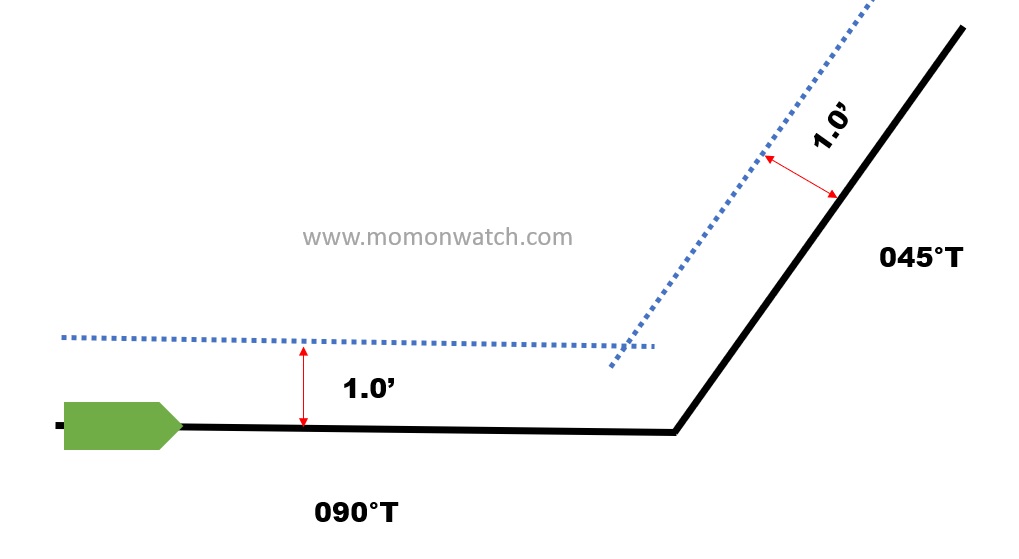
- Using a pair of compasses on the datum, draw an arc to serve as a turn onto your course with a radius of 1’ such as illustrated below.
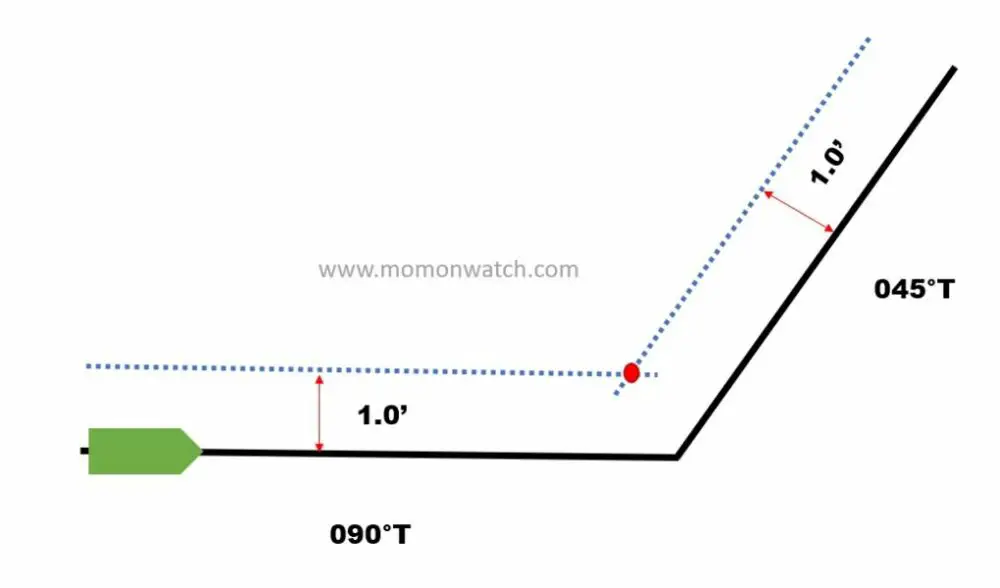
- Applying the point of overcoming the inertia backward, the wheel-over position or point is approximately 0.2 nm from where the turn is tangent with the initial course.
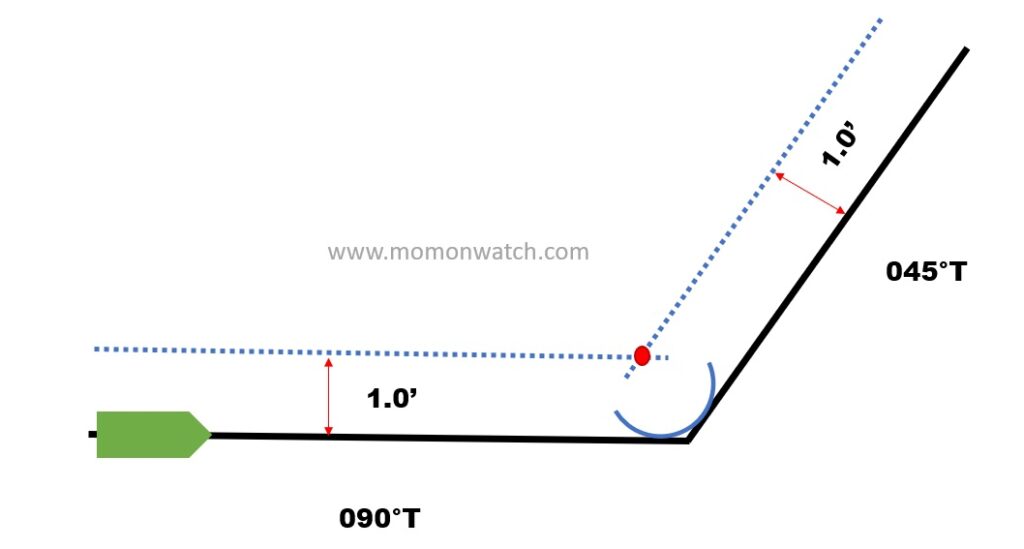
By drawing a line parallel to the final course through the wheel over the position a wheel over the line is created. This line indicates the points of wheel-over when the vessel is not exactly on her course line during the turn or alteration of course. (figure below)
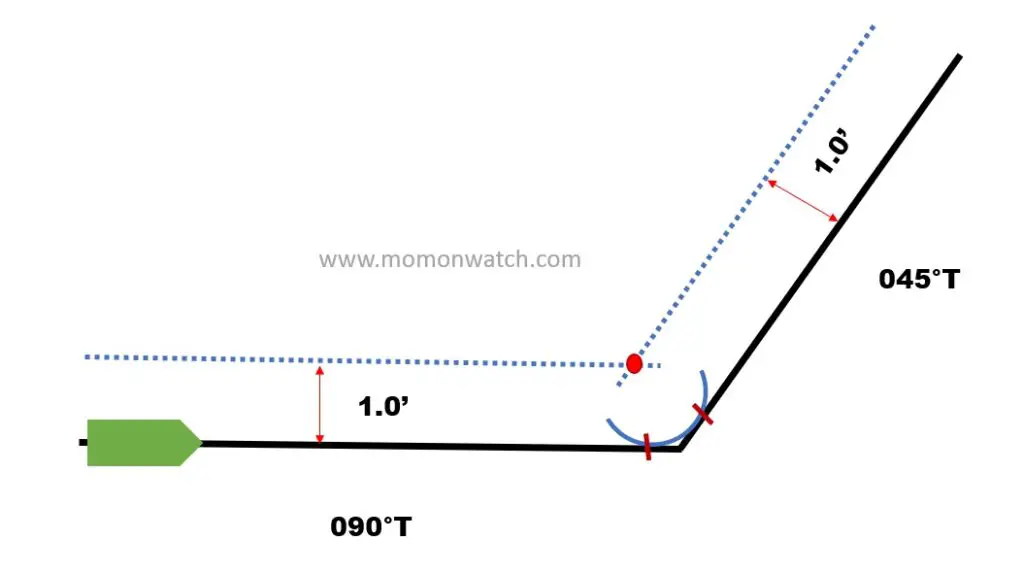
What is The Turning Radius of a Ship?
When a vessel turns under a continuous full helm through 360 degrees, its pivot point will follow a roughly circular track called a turning circle. The radius of this circle is the turning radius of the ship. It is affected by the length of the ship, the speed at which the ship is moving, and the depth of the water.
The general rule is that the turning circle will be larger when the ship is longer. The final diameter will be determined by the kind of rudder and the steering effect that it produces, with the distance between the rudder and the hull having a significant impact on the decision. The turning action is more efficient when there is a smaller clearance between the rudder and the hull.
The following factors will thus affect the rate of turn and therefore the size of the turning circle and turning radius:
- Structural design and length of the ship.
- Draught and trim of the ship.
- Size and motive power of the main machinery.
- Distribution and stowage of cargo.
- Even keel or carrying a list.
- Position of turning to the available depth of water.
- Amount of rudder angle required to complete the turn.
Why is The Wheel Over Point and Turning Radius of ships Important to Consider?
The wheel over point (WOP) and turning radius of a ship are important to consider because they affect the ship’s maneuverability and therefore how the ship handles different situations.
For example, a ship with a large turning radius will have difficulty maneuvering in tight spaces. Conversely, a ship with a small turning radius will be more agile but may be less stable in rough seas.
The wheel over points when calculated and drawn on the charts enable the watchkeeper to know at each waypoint the value of the parameters he/she needs to maintain to properly negotiate the course change.
For example, because the officer on watch (OOW) knows the Rate Of Turn (ROT) equals the speed of the ship divided by the radius of turn he/she will know what parameters to use to negotiate the turn to stay on the correct arc.
With an ECDIS it will then be possible to input those parameters and even if there is a fixed object near the wheel over the position from which radar bearing/range or the visual bearing can be taken, enable the wheel over position to be defined as indicated in the accompanying figures.
Under each waypoint, enter the value of “Turn Rad” and “speed” to create the arc for the alteration of course for each leg in the route.
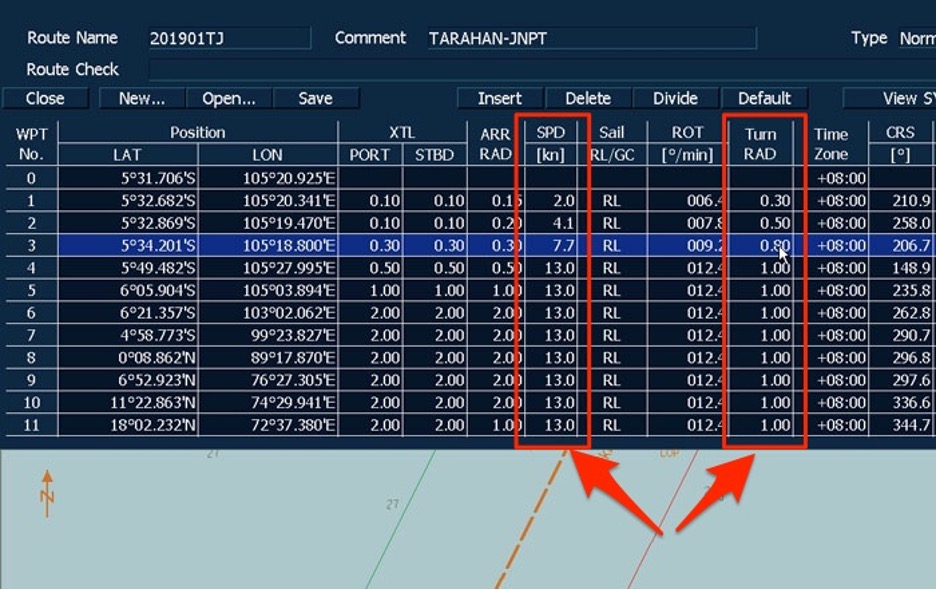
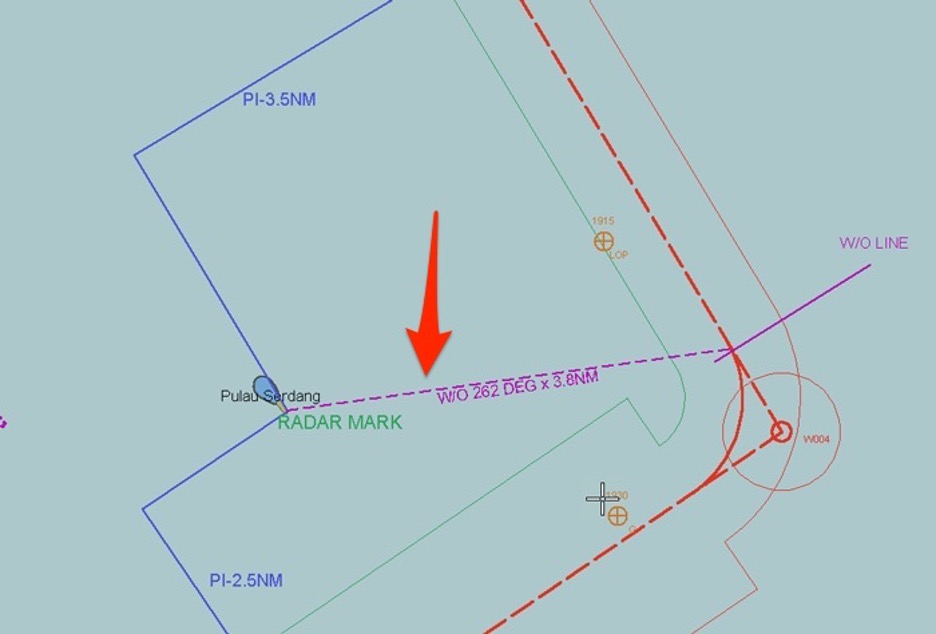
Conclusion
In order to avoid a hazard or danger during the course of a voyage, especially when transiting a traffic lane, following a traffic separation lane, or passing a shoreline or rock, the ship needs to be kept on the track planned. The cross-track distance should either be zero or kept to a minimum because there is less available sea room.
Determination of the wheel over position coupled with the use of the ship’s turning radius is a technique used as a means to ensure the ship stays on the desired track during and after the course alteration so as to minimize the cross-track distance and keep the vessel at a safe distance from prospective hazards.
- Types of Gas Carriers as per IGC Code – April 22, 2025
- Wind-Assisted Propulsion Systems (WAPS): A Game Changer for Maritime Decarbonization – February 6, 2025
- 10 Boat Salvage Yards in California – January 25, 2025




Leave a Reply